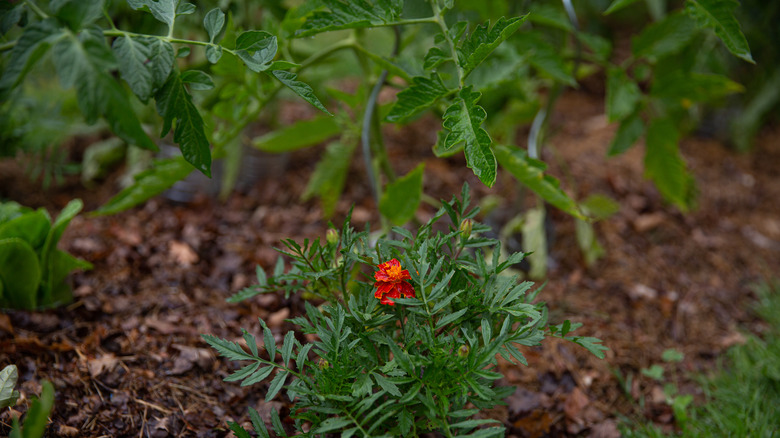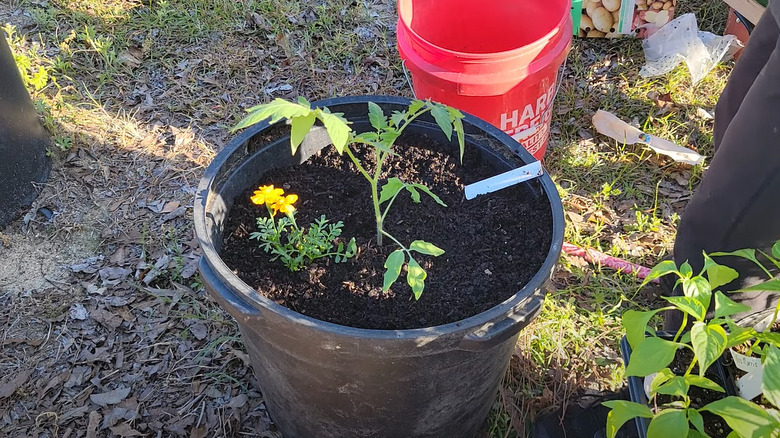Plant Marigolds Near Your Tomatoes And Watch Them Thrive
Are you a backyard gardener wondering how to turn your tomato plants into a bountiful harvest? Well, the answer to your dilemma might not lie in a stash of synthetic chemicals promising quick fixes. Instead, it may be found in something as simple and as beautiful as the marigold. Known for their vibrant blooms that span a spectrum of warm hues, marigolds are more than just pretty faces in your green patch. These humble flowers possess an impressive portfolio of benefits as a companion plant for tomatoes from enhancing pollination, serving as a trap crop, deterring unwelcome animals, keeping bugs off your tomatoes, and warding off nematodes. What's even better, with a shared love for full sun and well-drained soils, marigolds and tomato plants are a match made in garden heaven, setting the stage for peaceful coexistence that promises growth.
While tomato plants are self-sufficient in the pollination department by housing male and female parts within their flowers, they sometimes need encouragement. Intercropping with marigolds comes in handy here. On days when it's a tad too cold or damp, which can deter the natural pollination process, the vibrant marigold flowers act as beacons of hope — they attract diverse pollinators, from bees to butterflies, ensuring your tomato plants get the pollination boost they need. More pollinators buzzing around means an increased chance of flowers developing into the juicy fruits you desire. To encourage marigolds in their long flowering season to continue drawing in pollinators, regularly deadhead them (snip spent flowers).
How marigolds keep pests away
There are many benefits of planting marigolds in your garden, as they provide multiple defense mechanisms against tomato plant pests. Emitting a potent aroma, these flowers are the unassuming heroes of eco-friendly gardening, detracting pesky rabbits and deer. And as if that wasn't enough, these floricultural warriors draw in parasitic wasps and ladybugs, offering an environmentally-conscious strategy for keeping the tomato-loving stink bugs at bay. Further, a 2007 study published by the International Journal of Agricultural Research corroborates the marigolds' efficacy as a trap crop, a strategic decoy that draws malicious bugs such as the fruit borer away from your tomatoes.
But that's not all. According to a 2019 study published by Biology Open, in a remarkable subterranean struggle, marigolds release a natural chemical (alpha-terthienyl) that targets root-knot nematodes — soil-dwelling pests, most of which munch on plant roots. This inbuilt nematode combat technique allows you to bypass the need for invasive soil fumigation. However, for the protective shield of marigolds to hold strong, their presence is crucial throughout the tomato's growth period.
Whether establishing marigolds as a perimeter defense or incorporating them among tomato plants, consider the spatial requirements. Dwarf marigolds can comfortably nestle with your tomato plants, whereas larger varieties need a respectful distance to avert a battle for nutrients. You could intercrop marigold and tomato plants in a single container or let them flourish side by side in separate pots. However, these plants must share the same soil for nematode control.

